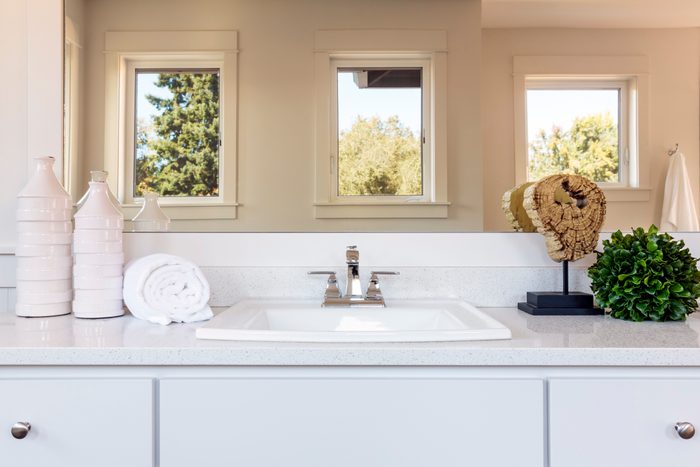
Drop-in Bathroom Sinks
Drop-in sinks are placed in the bathroom countertop from above. They’re held in place by a rim that overlaps the countertop, as well as by screws (or “sink clips”) from below. They’re a staple sink, found in homes across the county.
Key characteristics:
- Reasonably priced.
- Readily available in various materials.
- Easy, DIY-friendly installation.
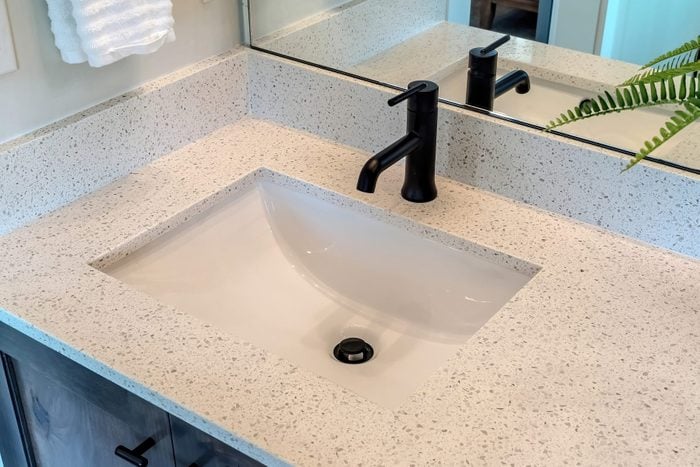
Undermount Bathroom Sinks
Undermount sinks attach to the countertop from below. Because this means the hole in the countertop will be fully exposed, undermounts are generally only used with solid-surface countertops.
Key characteristics:
- Reasonably priced.
- Readily available in various materials.
- More difficult to install than drop-in models. They’re a good fit for intermediate to advanced DIYers.
- Relatively easy to clean, although the gap between the sink and underside can sometimes be difficult to reach.
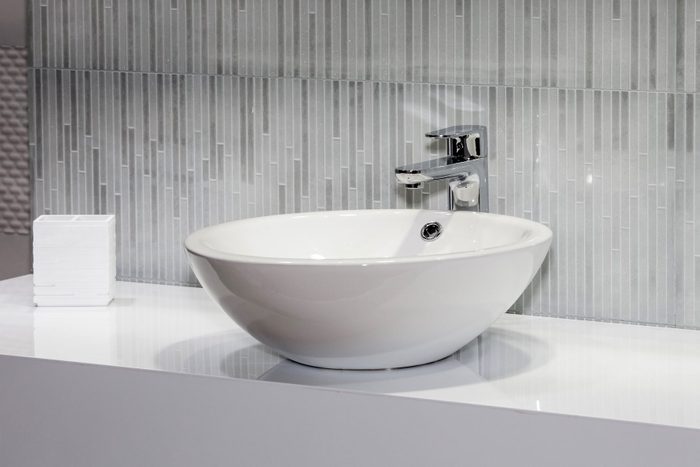
Vessel Bathroom Sinks
Vessel sinks are meant to be displayed. Their basins sitting on top of the counter rather than recessing below it. In a way, they’re a throwback to sink design from the 1800s, when a pitcher of water and a bowl were commonplace.
Key characteristics:
- Wide range of prices to suit most budgets.
- Readily available in various materials.
- Intermediate DIYers can handle the installation.
- Cannot be easily retrofitted onto a countertop with a hole for drop-in or undermount sinks.
- The raised height can affect accessibility.
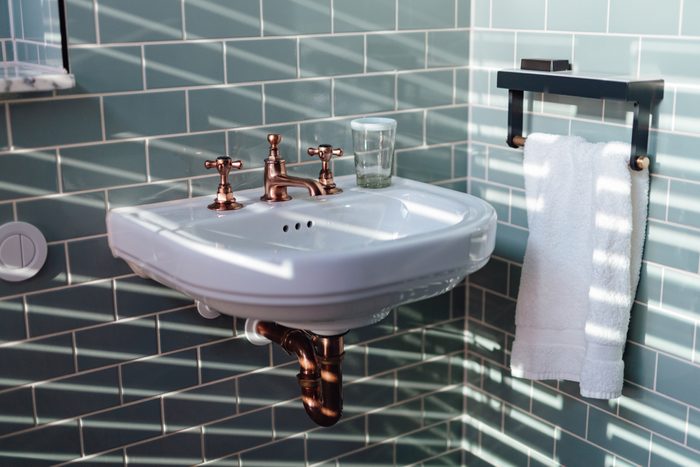
Wall-Mounted Bathroom Sinks
Wall-mounted sinks are standalone units without a cabinet and countertop. Instead, they attach directly to a wall bracket. Plumbing is below the sink and exposed to view.
Wall-mounted sinks can be utilitarian and industrial or stylishly minimalist. That vast range in style means two similarly-sized porcelain wall-mounted sinks can range in price from $55 to $550.
Key characteristics:
- Wide range of prices to suit most budgets.
- Available at big box stores and specialty plumbing stores.
- Normally porcelain, but other material options are available.
- DIY friendly.
- Can have an industrial or minimalist appearance.
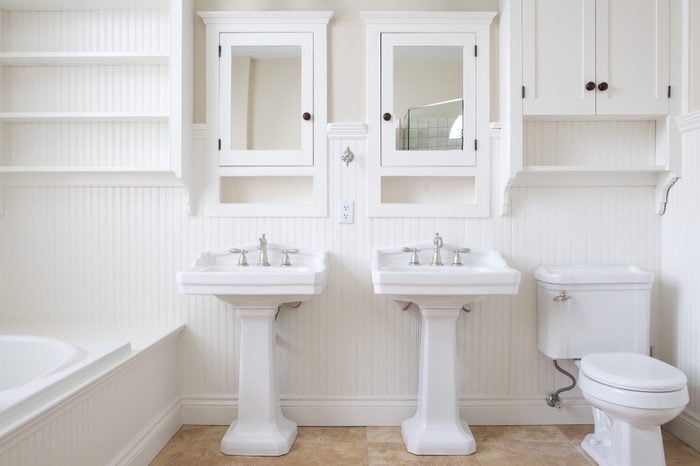
Pedestal Bathroom Sinks
Pedestal sinks are also standalone units. Essentially, they’re wall-mounted sinks with added support from a decorative stand that hides the plumbing. Because the basin is cast into a single piece, pedestal bathroom sinks are usually constructed from a manufactured material such as cultured marble.
Key characteristics:
- Moderately priced, but frequently more expensive than counter sinks of the same material. The pedestal adds cost.
- Readily available in various materials.
- DIY friendly.
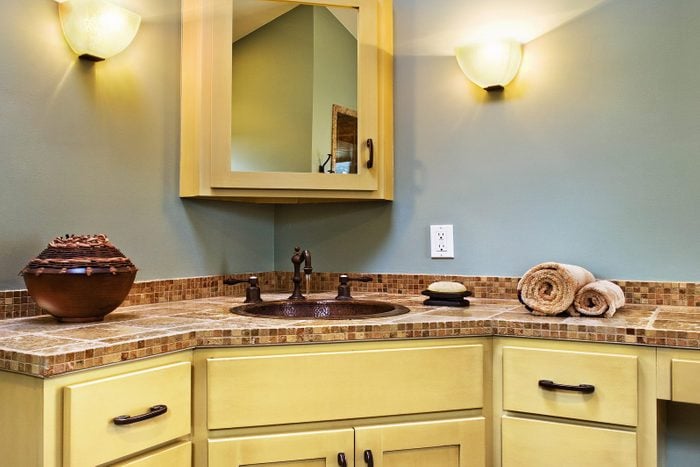
Corner Bathroom Sinks
As the name implies, corner bathroom sinks fit into a corner with a “quarter circle” design. Available in drop-in, undermount, wall mount or pedestal designs, these space-saving sinks allow for added elbow room in tight quarters.
Although they can be installed anywhere, you’re most likely to see them in a half bath that’s been squeezed into a former closet or under-stair conversion.
Key characteristics:
- Because of their specialty nature, they tend to cost more than a more common sink in the same material.
- Frequently stocked in big box stores or plumbing supply houses, they can also be special-ordered.
- DIY-friendly. Be sure to examine the destination corner thoroughly, as most existing corners are not square.
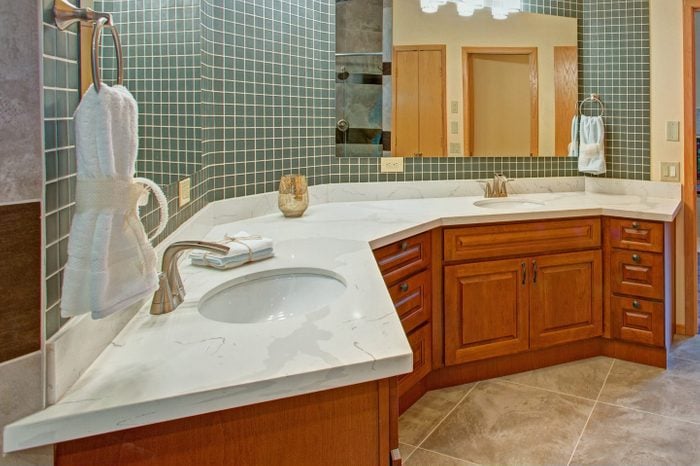
Integrated Bathroom Sink/Countertop
Manufactured materials can be cast into almost any shape. This allows manufacturers to offer countertops with one or more integrated sink basins. Cultured marble is the most popular material for integrated sinks, but they are potentially available in any manufactured material.
Key characteristics:
- Widely available.
- Primarily cultured marble, but other material options are available.
- Extremely DIY-friendly.
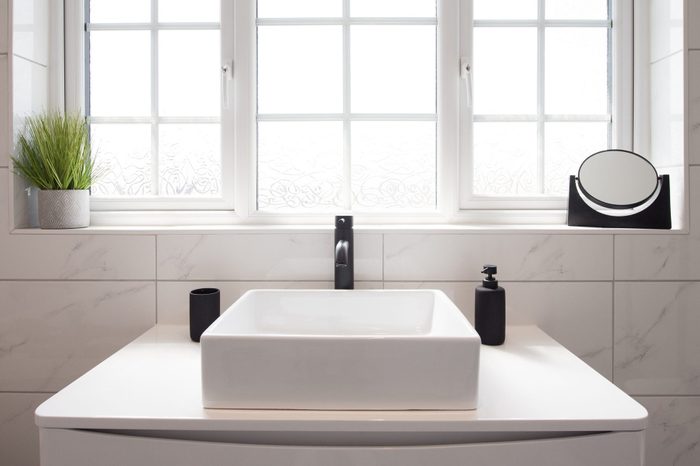
Flat Bathroom Sinks
You may have noticed that when we discuss sinks, we talk about the “basin.” That’s because sinks evolved from simple basins of water, and still retain that form. But most modern bathroom sinks are used for hand washing or teeth brushing. You rarely, if ever, fill the basin with water.
A flat sink rejects the traditional basin design. Instead, these sinks use a slight slope to channel water to the drain. The below-counter depth is minimal, and in some instances non-existent. A flat sink trades the ability to soak clothes for a sleek design and minimalist style.
Key characteristics:
- Strong visual appeal.
- Easier to clean than the curved sides of a basin.
- Eliminates the need for a pop-up drain assembly, which makes installation easier.
- Available at most big box stores or specialty plumbing supply stores.
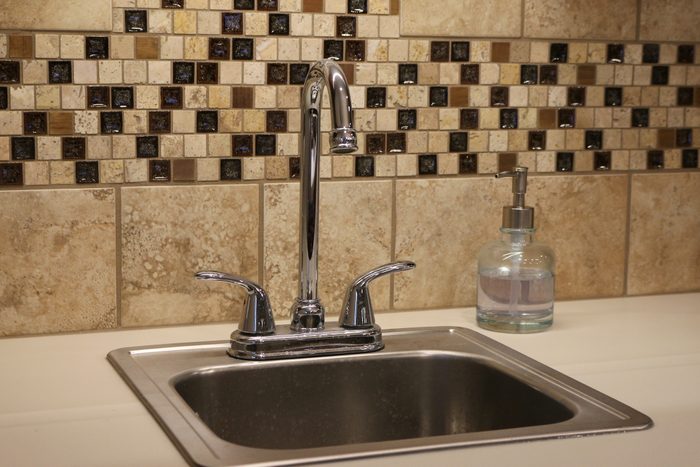
Stainless Steel Bathroom Sinks
Stainless steel sinks are popular because they’re durable, easy to clean and resist odor and germs. Although those traits are great for bathrooms, stainless steel is far more likely to be found in a kitchen sink.
Key characteristics:
- Affordable.
- Widely available.
- Lightweight.
- Easy to maintain, with no real restrictions on cleaning materials.
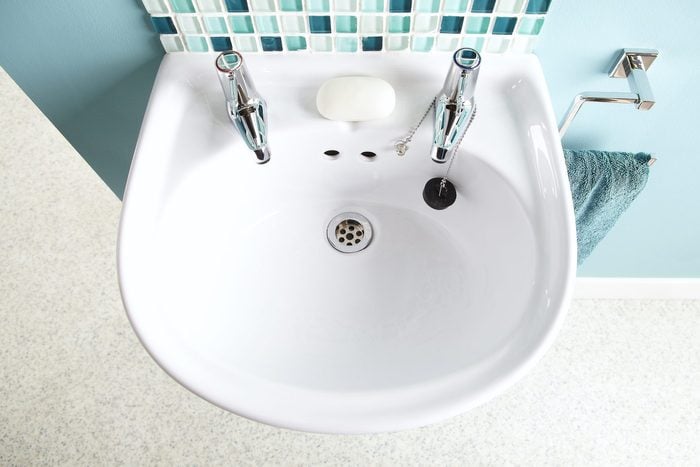
Porcelain Bathroom Sinks
Porcelain is a ceramic kiln-fired at high heat, resulting in a glossy, nonporous surface. Sometimes called vitreous china, porcelain does not rust, rarely stains and is easy to clean. That makes it a popular material for bathroom fixtures such as toilets and sinks.
Key characteristics:
- Readily available.
- Lightweight, making it a good fit for wall-mount, vessel and pedestal sinks.
- Stain resistant.
- Easy to clean. Almost all toilets are porcelain, so any cleaning materials that are OK on a toilet are OK for a porcelain sink.
- Vulnerable to impact damage.
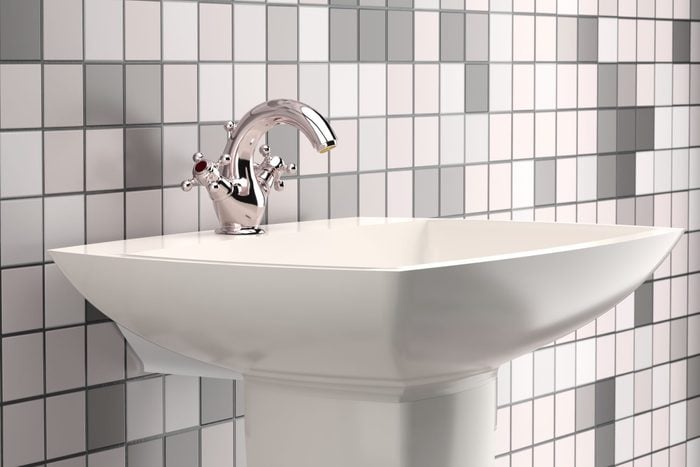
Enamel Bathroom Sinks
An alternative to a full porcelain sink is a baked-on enamel covering a cast iron or steel body. This combines the smooth, sanitary surface of porcelain with the strong core strength of metal.
Key characteristics:
- Widely available.
- Resistant to stains and blunt impact damage.
- Can be vulnerable to chips from sharp or pointed impact.
- Chipped enamel makes the metal underneath vulnerable to rust.
- Can be formed into any shape, allowing for integrated basins.
- Heavy. Large sinks may require extra support.
- Maintenance is simple. Just avoid abrasive cleaners, which dull the surface shine.
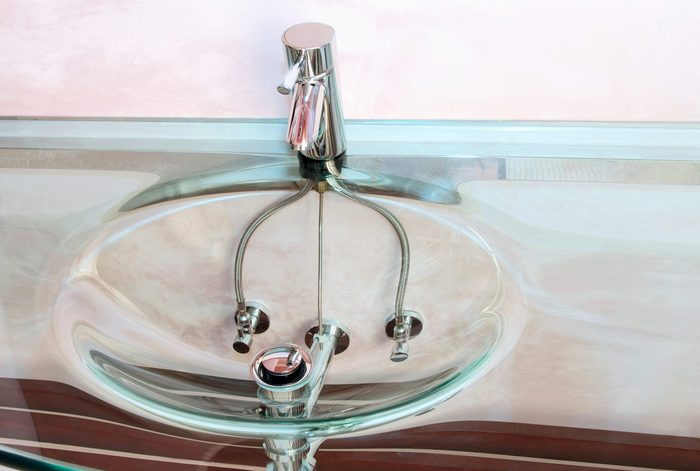
Glass Bathroom Sinks
Hard, non-porous glass in the bathroom is beautiful and easy to clean. It’s especially popular for vessel sinks, where the sculpting and color of the glass will be on full display. Glass sinks are also available as one-piece countertops with an integrated basin, but those are much less common.
Key characteristics:
- Can be especially beautiful.
- Although more impact resistant than a wine glass, glass sinks are still more vulnerable to damage than most materials.
- Stain resistant.
- Easy to clean.
- Pricier than more common materials.
- Available in big box stores and specialty plumbing stores.
- DIY friendly as long as the installer is detail-oriented; imperfections and mistakes are harder to hide. Be careful to not over-tighten.
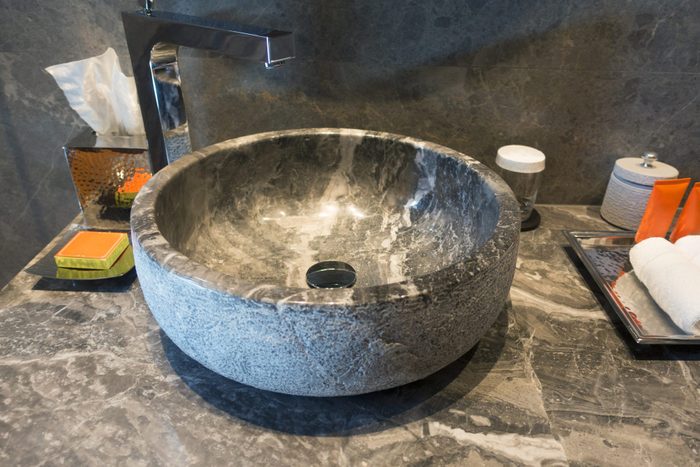
Stone Bathroom Sinks
It’s likely that the first sinks were stones rounded out by our cave-dwelling ancestors. Today, stone sinks add grace and class to bathroom design while absorbing a beating from daily use.
Key characteristics:
- Pricey.
- Durable against impact and heat.
- As a porous material, stone will absorb spilled liquids. The stone should be sealed to avoid staining.
- Maintenance includes re-sealing as needed. Avoid sink cleaners that damage the sealant.
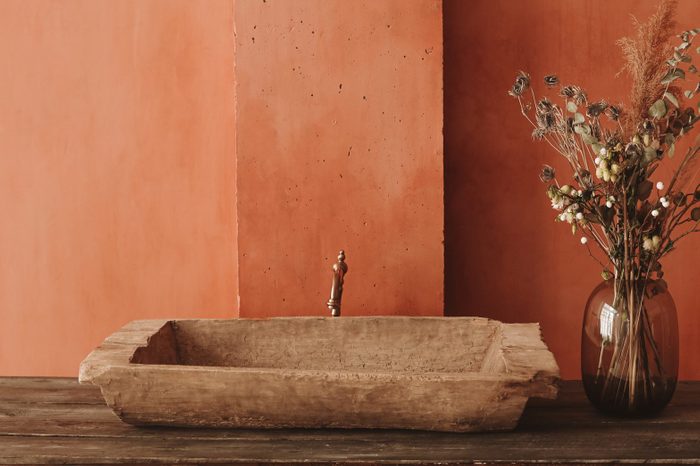
Wooden Bathroom Sinks
Sinks can be made from almost any type of wood, as long as water penetration is not an issue. Much like any other type of wood furniture, wooden sinks can have an elegant, polished design or a rustic feel. In the latter case, the manufacturer often leaves a live edge to highlight the rough edge of the wood on a vessel sink.
Key characteristics:
- Not widely available. You’ll need to special order or make your own.
- Water resistant woods such as teak are especially popular.
- Maintenance requires gentle cleaners and occasional resealing.
- Manufactured wood sinks are a good fit for intermediate DIYers.
- Custom crafting a wood sink is best left to advanced DIY enthusiasts.
- When properly sealed and maintained, wood sinks are durable. But if not maintained, they can become badly damaged faster than the other materials on this list
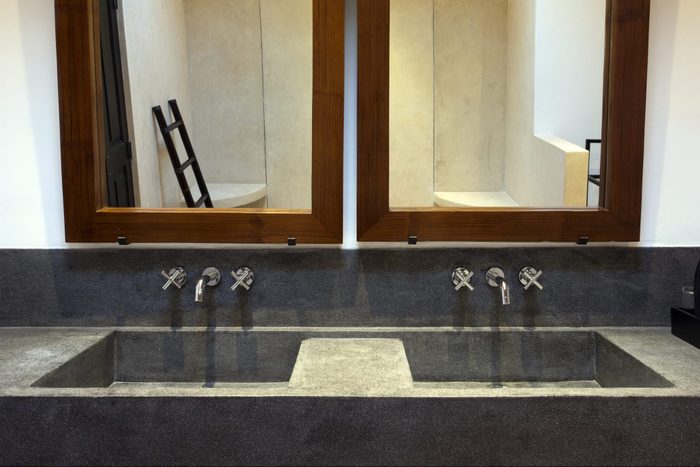
Concrete Bathroom Sinks
Concrete sinks give a bathroom a modern, industrial look. They can be custom-made, either pre-formed or poured onsite. The latter is especially popular when the bathroom design calls for an integrated basin/countertop.
Key characteristics:
- Popular as a vessel or integrated sink.
- For intermediate to advanced DIYers. If pouring in place, you’ll have an exceedingly messy installation and finishing process.
- Can be poured into almost any shape, and dyed to almost any color.
- Extremely impact resistant.
- Concrete is porous, making it vulnerable to stains unless sealed.
- Maintenance requires resealing concrete as needed.